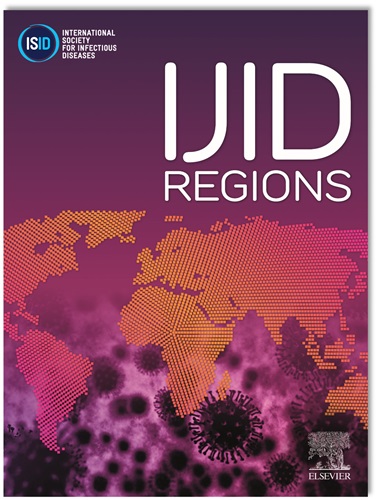年龄分层潜伏性结核病治疗对活动性结核病疾病负担的影响:一个高疾病负担老龄化国家的数学模型研究
IF 4.3
2区 医学
Q1 INFECTIOUS DISEASES
引用次数: 0
摘要
背景:韩国是经合组织国家中结核病发病率最高的国家,老年人再次发病的风险较高。然而,由于潜在的副作用,如肝毒性,潜伏性结核感染(LTBI)控制策略通常排除65岁以上的个体。确定干预的最佳年龄组至关重要。方法:我们开发了一个年龄结构的动态传播模型来模拟韩国结核病和LTBI的进展。该模型使用韩国疾病控制与预防院和健康保险审查与评估服务中心的结核病病例数据(2011-2018年)进行校准。我们通过评估不同年龄组不同覆盖率和成功率的LTBI治疗策略,预测了30年内避免的结核病病例。结果:针对35-64岁成人的LTBI治疗可最大程度地降低结核病发病率。该组LTBI治疗率增加了4倍,避免了32,814例,而19-34岁和≥65岁年龄组分别为11564例和5689例。增加治疗成功的可能性有一个较小但相似的效果。结论:优先考虑35-64岁年龄组的LTBI治疗可能会大大减少结核病负担,并支持国家结核病控制的年龄分层策略。本文章由计算机程序翻译,如有差异,请以英文原文为准。
Impact of age-stratified latent tuberculosis treatment on disease burden of active tuberculosis: A mathematical modeling study in an aging country with a high disease burden
Background
The Republic of Korea has the highest tuberculosis (TB) incidence among OECD countries, with older adults at elevated risk of reactivation. However, latent TB infection (LTBI) control strategies often exclude individuals over 65 due to potential side effects, such as hepatotoxicity. Identifying optimal age groups for intervention is critical.
Methods
We developed an age-structured dynamic transmission model to simulate TB and LTBI progression in Korea. The model was calibrated using TB case data (2011-2018) from the Korea Disease Control and Prevention Agency and the Health Insurance Review and Assessment Service. We projected TB cases averted over 30 years by evaluating LTBI treatment strategies with varying coverage and success rates across age groups.
Results
Targeting LTBI treatment in adults aged 35-64 resulted in the greatest reduction in TB incidence. A fourfold increase in the LTBI treatment rate in this group averted 32,814 cases—compared to 11,564 and 5689 cases in the 19-34 and ≥65 age groups, respectively. Increasing the probability of treatment success had a smaller but similar effect.
Conclusion
Prioritizing LTBI treatment in the 35-64 age group may substantially reduce TB burden and supports age-stratified strategies for national TB control.
求助全文
通过发布文献求助,成功后即可免费获取论文全文。
去求助
来源期刊
CiteScore
18.90
自引率
2.40%
发文量
1020
审稿时长
30 days
期刊介绍:
International Journal of Infectious Diseases (IJID)
Publisher: International Society for Infectious Diseases
Publication Frequency: Monthly
Type: Peer-reviewed, Open Access
Scope:
Publishes original clinical and laboratory-based research.
Reports clinical trials, reviews, and some case reports.
Focuses on epidemiology, clinical diagnosis, treatment, and control of infectious diseases.
Emphasizes diseases common in under-resourced countries.

 求助内容:
求助内容: 应助结果提醒方式:
应助结果提醒方式:


